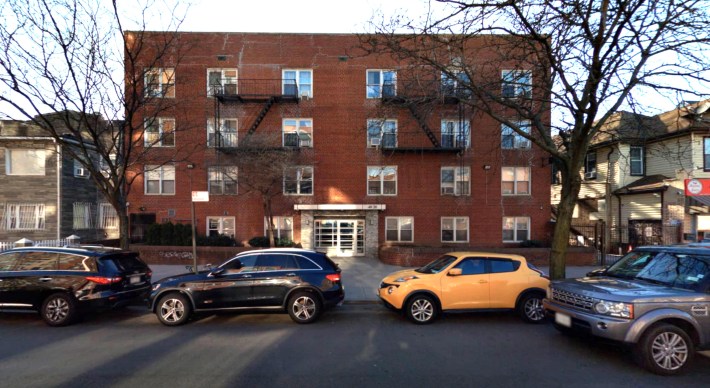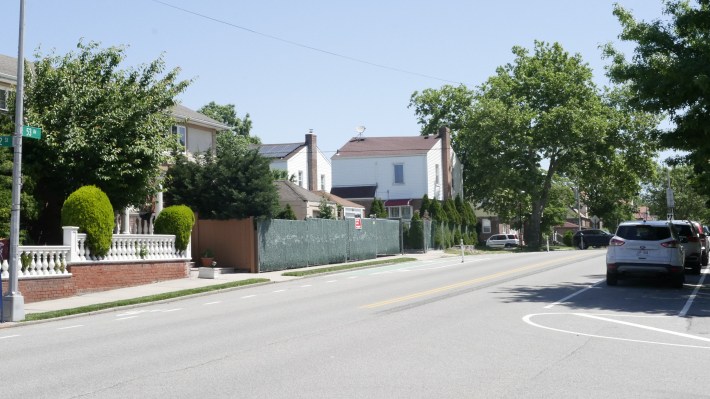Queens opponents of Mayor Adams’s “City of Yes” zoning reforms inadvertently demonstrated the importance of building more housing in their neighborhoods on Wednesday when they begged city planners to spare their “suburban” districts from contributing to addressing New York City’s dire lack of housing.
Addressing City Planning Commission Chair Dan Garodnick, Council Member Joann Ariola (R-Ozone Park/Rockaway) insisted plans to allow more housing in the area she represents would be "unmitigated disaster" for her constituents.
“That's what they bought in the suburbs for, that's why they raised their family in the suburbs," said Ariola, whose district includes 14 subway stations — and several neighborhoods where zoning restrictions severely limit the construction of new housing.
In mid-density neighborhoods — like the Rockaways and Lindenwood in Ariola's district — zoning and parking mandates make it unfeasible for developers to build up to the allowed zoning, because the high cost of building parking is not worth the extra units.
“When you say suburban communities, are you referring to your community district?” a stunned Garodnick told Ariola — noting that her district "is among the lowest producers of affordable housing ... at 129 total units over the last 10 years" — official stats the council rep said she did not "agree" with.
Although parts of Ariola’s neck of the woods may look like the suburbs, the district sits entirely within the boundaries of New York City — the model example of the suburban-style restrictive zoning enacted under Mayor Michael Bloomberg that has made housing scarce and expensive in the five boroughs. City of Yes aims to re-introduce "missing middle" density housing by allowing more housing near subway and rail stations, mixed-use "town center" zoning and accessory dwelling units, and getting rid of parking mandates.

Ariola was not alone among Queens elected officials and residents who testified on Wednesday that City of Yes would destroy what she called the “character of suburban communities." This is just a small sample:
- Carol McCarthy, a Queens resident, called for the borough to secede from the rest of New York City if the zoning plan passes.
- Arlene Schlesinger, of the Hollis Hill Civic Association in Eastern Queens, said that “the city of yes is attempting to transform our suburban areas into high density zones.”
- Henry Euler, president of the Auburndale Improvement Association, said that the project hasn’t been vetted — despite a lengthy public review process — and that his association opposes transit-oriented development because it “isn’t fair” to single family homeowners.
- Phyllis Inserillo, Ariola's chief of staff and resident of Howard Beach said, “homeowners are the backbone of this city and we pay high property taxes to live in neighborhoods like Howard Beach.”
- Paul Graziano, a prominent anti-development advocate who has been fear-mongering to community boards throughout the public review process, continued his pro-single-family-zoning crusade.
It’s a full house at the city planning dept. first public COY Housing Opportunity hearing. Chair Garodnick opened the hearing with background about the housing crisis: “Last year 10 community districts created as much housing as the other 49 combined.” pic.twitter.com/Ya0q2CJlFG
— Sophia Lebowitz (@SophLebo) July 10, 2024
In truth, however, the changes to low-density neighborhoods in Queens are modest: The zoning changes will produce 58,000 new units on the low-end and 109,000 on the high-end, the city's environmental review of the proposal has found — less than one new unit per acre over 15 years, and far less than what the city needs based on expected population growth.
And by getting rid of parking mandates, another controversial piece of City of Yes, the city wants to deter the cost of building underground parking from incentivizing developers to build less units.
While opposition to density and housing in eastern Queens may not on its surface seem to have an impact on higher density, the borough's decades-long history of restrictive zoning and low housing production puts a strain on the rest of the five boroughs, as Brooklyn Borough President Antonio Reynoso has noted.
Parts of Eastern Queens with commuter rail stations and subway stations have significantly more capacity for housing — low-density zoning there has essentially shifted the burden of gentrification elsewhere. From 2011 to 2020, low and mid-density districts produced 0.45 new housing units per 1,000 residents per year, behind Long Island's actual suburbs, according to a report from Citizens Housing & Planning Council.
“Though these districts are outside of the borough, they redirect market pressure onto Brooklyn neighborhoods and tenants by excluding the potential for transit-oriented development across a significant part of the city," Reynoso said in his official endorsement of City of Yes.

Not all Queens residents are against the housing plan. Ben Turner, of Bayside, was the sole member of Queens Community Board 11 to vote favor of the housing proposal.
Turner's representative, Republican Council Member Vicki Paladino, also spoke out against City of Yes at the public hearing — insisting, in the same vein as Ariola, that she disagreed with stats showing over half of her constituents pay more than a third of their income in rent.
“Frankly, Paladino doesn't seem to really care about lower income working people in our district,” said Turner.
Queens Borough President Donovan Richards has yet to release a recommendation — the commission expects to get something from his office later in the summer. All other borough presidents have submitted their recommendations, with low-density haven Staten Island the only “no” to the mayor’s “yes” plan.
“The Borough President has said repeatedly in recent years, the only way out of our city’s affordable housing and homelessness crises is to build,” a spokesperson for Richards told Streetsblog.
“To that end, the Borough President looks forward to holding a public hearing and issuing his recommendation regarding the administration’s City of Yes for Housing Opportunity proposal later this summer.”
Over 300 people signed up to testify at Wednesday's marathon hearing, which started at 10 a.m. and lasted nearly 15 hours, a majority were in favor of the proposal.
The public hearing is a step in the Uniform Land Use Review Procedure, which all city rezonings must complete. The City Planning Commission hears public testimony and receives recommendations from each community board, borough board and borough president. The recommendations are advisory and meant to inform possible changes in the text ahead of a City Council vote.
The community board, borough president and borough board review phase ended on July 8 — but the Planning Commission has said that it would accept recommendations up until its vote, expected sometime in September.






